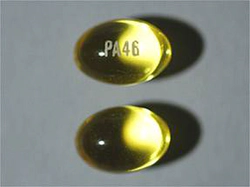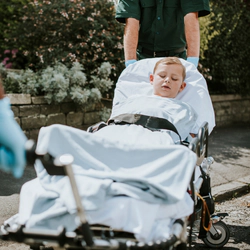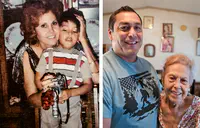Children in ER After Drinking Cough Suppressant: Parents Must Act
In light of an increase in children misusing cough syrup, parents must do everything possible to make the home safe for their children. Parents must also talk to their children about drugs and help their sons and daughters understand why they should avoid mind-altering substances.

Every parent wants to create an environment of safety, stability, love, nurturing, and growth for their children. Sadly, reports show even the home a child is growing up in might be dangerous to them, especially if that home has easily accessible mind-altering substances like cough syrups and medicines stored in it.
Parents must understand the risks of storing certain medications in the home and take necessary steps to reduce risk and promote the safety and well-being of their children.
Reports Show Rates of Child-Exposure to Cough Medicine are Up
A November 2022 news article in US News broke with the headline, “More U.S. Kids Are Heading to ERs After Drinking Cough Suppressant.” That report highlights findings from a research paper published in the journal Pediatrics, which sought to determine how and why US children were increasingly being exposed to the cough suppressant drug benzonatate.1

Image courtesy of fda.gov
What is benzonatate? Benzonatate is a non-narcotic cough suppressant first approved by the US Food and Drug Administration in 1958, designed for children ages ten and up. The drug was initially quite appealing for its non-narcotic properties. Prescriptions for the drug soared through the latter half of the 20th century and into the 21st century.
Unfortunately, while benzonatate is not a narcotic, it can still be misused, and users can still overdose on it. The paper in Pediatrics outlined that, between 2010 and 2018, the number of children admitted to emergency rooms for benzonatate poisonings increased dramatically. Researchers recorded almost 4,700 cases of benzonatate poisoning reported to US poison control centers from 2010 to 2018.
According to the data, 77% of poisonings were accidental, about 83% of which occurred among children under five. About 23% of poisonings came from intentional experimentation with benzonatate. Roughly 61% of those cases occurred among children between 10 and 16.
Further, the researchers also noted that the number of children prescribed benzonatate cough medicines has increased by 62% (from 217 prescriptions in 2012 to 351,000 prescriptions in 2019). As the number of prescriptions went up and more children were exposed to the drug, more kids went to the ER for overdoses on benzonatate.

Of the almost 4,700 poisoning cases, less than 1% of children died, and those who did perish were between nine months to four years old. The clinical effects of benzonatate overdose in these fatalities included cardiac arrest, respiratory arrest, seizure, coughing or choking, nonreactive dilated pupils, acidosis (a respiratory condition in which there is too much carbon dioxide in the body), high blood sugar, electrolyte abnormalities, excess secretions, slow heartbeat, and no heartbeat leading to death. All of these conditions can be prevented in the future by ensuring children cannot access potentially harmful substances like cough medicine.
“When someone is sick with a nagging and unrelenting cough, it is natural to seek treatment to hasten recovery using a ‘quick fix.’ Benzonatate is one of them,”
While cough medicines have become a staple in millions of American homes, the above data proves beyond a reasonable doubt that there is cause for concern in keeping such drugs in the home. “When someone is sick with a nagging and unrelenting cough, it is natural to seek treatment to hasten recovery using a ‘quick fix.’ Benzonatate is one of them,” says Dr. Elise Perlman, an emergency department physician at Cohen Children’s Medical Center in Queens, N.Y. “This is important because simply having these and other medications in the home runs the inherent risk of unintentional and intentional ingestions among young children and adolescents leading to toxic adverse effects, some of which can be fatal even in small quantities.”2
Perlman advised parents to keep cough medicines out of reach of children and stored away–locked away even–from them. “It is of utmost importance to remain cognizant that what we bring into our homes poses a threat and can compromise the safety of our children,” Perlman advised. “As parents, this initiative starts by limiting the use of over-the-counter and prescribed medications, such as benzonatate and other cough and cold remedies, and keeping medications out of reach and safely stored to prevent exploration, misuse, and abuse.” The doctor also encouraged parents to focus on supportive care, hydration, rest, and other remedies for cough and cold symptoms in children, rather than going for the instant “quick fix” that is benzonatate.
The Broader Issue of Young People Being Increasingly Exposed to Addictive Drugs
Perhaps the most critical data point to understand regarding child, teen, and young adult drug exposure is that, though overall drug exposures among youth have trended down, fatal overdoses within this age group have surged in recent years.

A research paper published in the Journal of the American Medical Association highlighted this concerning trend. The authors highlighted fentanyl as being the critical factor that has led to an increase in teen and young adult deaths. Quoting their summary, “Beginning in 2020, adolescents experienced a greater relative increase in overdose mortality than the overall population, attributable in large part to fatalities involving fentanyls. In the context of decreasing adolescent drug use rates nationally, these shifts suggest heightened risk from illicit fentanyls, which have variable and high potency. Since 2015, fentanyls have been increasingly added to counterfeit pills resembling prescription opioids, benzodiazepines, and other drugs, which adolescents may not identify as dangerous and which may be playing a key role in these shifts.” The conclusion? Youths are at higher risk when they consume any drug because every drug could potentially have fentanyl mixed into it.3
For parents, the key takeaway is to prevent their children from ever experimenting with drugs in the first place. A teen or tween getting high on a cough suppressant might not seem harmful to some, but the long-term effects of that initial drug exposure and initial high could prove fatal, especially if it leads to the individual experimenting with fentanyl-laced pills, cocaine, meth, opioids, or cannabis.
Parents must protect their children by ensuring no mind-altering substances are stored anywhere in the home where youths can access them. Beyond that, parents must talk to their kids about drugs. Parents should have open, honest, engaging, informative, and empathetic conversations with their children so that kids learn why they would not want to experiment with drugs. Empowered with such knowledge (and with tools for saying no when peer-pressured), youths will be less likely to experiment with drugs as they grow into adulthood.4
Sources Cited:
-
Pediatrics. “Benzonatate Exposure Trends and Adverse Events.” Pediatrics, 2022. publications.aap.org ↩︎
-
USNews. “More U.S. Kids Are Heading to ERs After Drinking Cough Suppressant.” US News, 2022. usnews.com ↩︎
-
JAMA. “Trends in Drug Overdose Deaths Among US Adolescents, January 2010 to June 2021.” Journal of the American Medical Association, 2022. jamanetwork.com ↩︎
-
KidsHealth. “Talking to Your Child About Drugs.” Kids Health, 2023. kidshealth.org ↩︎








 ®
®